Text: I Saw A Man Get Struck By Four Different Bolts Of Lightning, And Stand Up. “Family Drama,”

Text: I saw a man get struck by four different bolts of lightning, and stand up. “Family drama,” he muttered as he spotted me, rolling his eyes.
More Posts from Brushlesprouts and Others
Avoiding Info-Dumps and Boring Exposition
Exposition can be many things in a story: character backstory, definitions, history, etc., and it’s a necessary part of any narrative. Yes, it’s “telling” instead of “showing”, but there are times when you have to “tell” to aid with pacing, detail, and most important of all, reader comprehension.
Your readers don’t know what’s in your head; they know what’s on the paper.
So you have to give exposition (though some stories will be heavier than others) and you have to do it well or your readers won’t care enough to pay attention. Exposition is not something to just shove aside or box away with an “icky” label on it because it affects the quality of the story as a whole. If you write it well, it can enhance the story rather than detract from it– which should be the goal of any element of writing.
Learning to write better exposition makes you a better writer in general, and part of writing better exposition means understanding the main problems and the solutions.
What is an “info-dump?”
Simply put, “large amounts of information that don’t directly matter to the moment of the scene”. They can be seen as reflections on backstory or facts about the characters or world, specifically in large quantities.
Three commonly seen methods of info-dumping are the chapter-start block, the monologuing narrator, and the rambling narrator. (Note: the names are not official, just what I personally call them.)
The chapter-start block is when the writer starts each new scene or chapter by giving all the backstory and relevant information at the very beginning, then running off and writing the scene while hoping the reader can remember everything. That kind of writing is often the result of “I want to get to the interesting story so I’ll take care of the boring setup first”. Guess what, your readers agree. They don’t care about your exposition because you’re presenting it in a boring way, and now they may not be able to get into the actual story because they don’t understand it as well as they could. While starting a new chapter or scene with exposition isn’t necessarily bad, large qualities of information are.
The monologuing narrator is exactly what it sounds like: the narrator talks at the reader for an extended amount of time. This info-dump can be found at any point of a scene, but it still gives way too much information at once. It also sometimes presents its own problem of timing, because the narrators shouldn’t be “zoning out to think about things” in the middle of a scene unless that detail weighs very heavily on them. Narration shows train of thought and the monologuing narrator usually needs to chill. (There are times when monologues are acceptable, but writing one primarily to deliver background information is not acceptable use.)
Similar to the monologuing narrator in that character thought takes over the scene, the rambling narrator has an additional problem in that they often go off-topic or into detail that isn’t necessary for the moment. While the occasional “ramble” can be used to show character personality, a writer can’t expect readers to actually learn from that ramble. Large amounts of information aren’t easy to digest, especially when everything is presented at the same time.
Avoiding the info dump.
Keep all information in context.
If your scene is about a character going for a job interview, don’t start mentioning their dead sister unless there’s an important connection that’s immediately relevant. Only reveal what makes sense to reveal within the events and flow of the scene. It’s true that the lines can get blurry when you’re working with a story that has interconnected elements, but early on you want to keep exposition in careful balance with the forward momentum of the narrative. Later on, once your readers are already hooked, you can ease up a little on the withholding and start exploring details– but keeping things contextual will still always be an important guideline to follow.
Use prompts for information.
Prompts are things like people, situations, in-story objects or moments that ‘remind’ the narrator of the piece of exposition. Part of avoiding never-ending, rambling, or irrelevant exposition involves using setting and plot to prompt information from the narrator’s mind, rather than just dump it all out at once. Prompts help shows connections and grant relevance by tying the information into the current scene and moment.
Narrator perspective guides exposition.
The narrative point of view helps ground the reader’s new information by presenting it through the eyes of the person they are following. This does mean that your audience can get biased info, but that’s part of the nature of storytelling; it’s not a documentary. Similar to using prompts, narrator perspective helps guide exposition by presenting information that’s relevant to the narrator and their personal story.
Use a “weaving” techniques to avoid giant blocks of text.
It’s best to weave your exposition between dialogue, thought, and action to write in a way that’s engaging and informative. Think of it like being in a class. If your professor spends the whole hour giving a lecture off slides, chances are you might be overwhelmed at times and tune out a bit. If they introduce an activity and give smaller lectures to explain the science behind the steps, then you are more likely to pay attention and not feel as overwhelmed. Writing works the same way. The best results are typically found when the activity (story events that are “shown”) are blended with lecture (backstory/exposition that is “told”).
Generally, you want to practice a balance of dialogue, action, and exposition. Some scenes may be heavier in one category than the other, and that’s okay, but a balance of those elements helps with overall pacing and keeps readers engaged and more likely to learn.
Not everything needs explaining.
While there are certainly pieces of information that you have to “tell” for the story to make sense, there are times when “showing” can cut down on lengthy exposition and make for a more engaging narrative. Why have your narrator explain/“tell” about how they don’t get along with their mother when you can show the poor relationship through the way they interact? And don’t just keep it isolated to one scene, unless the story calls for it, because some parts of exposition stretch beyond individual moments and affect the entire story. It may be tempting to try and directly point everything out at once, but that’s a quick road to long-winded scenes of exposition that leave your characters and their plot behind.
Writing more interesting exposition.
For exposition to be interesting, it needs meaning, and meaning can be granted through context and the relevance to the current scene when the reader is not yet fully invested in your story. When presenting exposition, there are a few things that can be kept in mind:
Try and convey something about the character’s personality with the way they give information. We all have a personal take on things and so will a character, so let that personal perspective show via tone, word choice, fact detail, etc.
An interesting voice can carry a story decently far, especially when it comes to giving background information. It’s possible to have a character that sticks only to the facts, but without a bit of emotion behind that exposition, it can get dry really quickly. Your character needs to interact with their world, not be a robot that gives impartial explanations of everything.
If you repeat information, which is needed for anything with heavy detail, present it in different ways or at least don’t copy the wording.
Build on detail over time, and make sure to apply that detail to the scene to allow for contextual learning.
Tension tends to create reader interest. Giving exposition during tense moments can force a reader to learn on the spot– as long as it doesn’t distract from the scene.
Pace yourself. Part of boring exposition is tied into how much is presented at once, and while info-dumps can be identified and avoided with relative ease, you still have to watch how much information is being presented in a scene or chapter. Even if you “weave” it correctly, there’s still a chance that it’s too much for a reader to reasonably digest.
Good luck with your work and if there are any questions, drop them in my ask box and I’ll see how I can help. Just please read my Rules and Considerations page to make sure I’m the best resource, and consider a Gift of Coffee to grant me an energy boost, if you’re feeling generous.
For those who like silly artists who also love martial arts. Give this one a looksee.
Oh!

Hey budoka and fitness buddies! I’ve had several people in the community approach me about martial arts & fitness related drawings- it’s super fun for me to work on things like that, as it basically combines two of the things I love most in life! When i can I like to draw stuff on the fly and for free- but time is pretty short these days and so, incidentally, is money! I am opening several slots for commissions of that variety this week. Wanna see yourself as a badass anime character? Or maybe you just want one of your favourite characters giving you a little bit of motivation? I’m your Pants!
Interested? Cool, have a sample/price list: sketches/simple lineart-10$:

Chibi, flat colours with basic shading- 15$:

One shot/short comics. B&W- 25$:

single waist up, full colour- 25$ :

full shot, full colour- 30$ and up :


You’ll get a 300dpi version of the image and big sloppy thank you from yours truly ;D WHY PANTS WHY ARE YOU DOIN THIS???
I am heading out to a comic convention in the month of May. Trips like this are an out of pocket expense for me. As it would happen, I’ve also got a handful of karate clinics I need to attend as well. Needless to say, it’s gonna be a “tight on the budget” kinda month! I am hoping to acquire some of the necessary funding in this way. If you’re interested send me a message, and I will provide you with art to make you smile and get you amped up to work out!! Thanks for stopping by and, as usual, Happy Training!


Truly a masterpiece that will live on as the purest form of art. Made this in MSPaint and was convinced to post it. I hope you enjoy.

It'sa mermaid for mermay! Played with textures and color stuff. Little different but we’ll see where I wanna go with it.
Tips for writing flawed but lovable characters.
Flawed characters are the ones we root for, cry over, and remember long after the story ends. But creating a character who’s both imperfect and likable can feel like a tightrope walk.
1. Flaws That Stem From Their Strengths
When a character’s greatest strength is also their Achilles' heel, it creates depth.
Strength: Fiercely loyal.
Flaw: Blind to betrayal or willing to go to dangerous extremes for loved ones.
“She’d burn the whole world down to save her sister—even if it killed her.”
2. Let Their Flaws Cause Problems
Flaws should have consequences—messy, believable ones.
Flaw: Impatience.
Result: They rush into action, ruining carefully laid plans.
“I thought I could handle it myself,” he muttered, staring at the smoking wreckage. “Guess not.”
3. Show Self-Awareness—or Lack Thereof
Characters who know they’re flawed (but struggle to change) are relatable. Characters who don’t realize their flaws can create dramatic tension.
A self-aware flaw: “I know I talk too much. It’s just… silence makes me feel like I’m disappearing.” A blind spot: “What do you mean I always have to be right? I’m just better at solving problems than most people!”
4. Give Them Redeeming Traits
A mix of good and bad keeps characters balanced.
Flaw: They’re manipulative.
Redeeming Trait: They use it to protect vulnerable people.
“Yes, I lied to get him to trust me. But he would’ve died otherwise.”
Readers are more forgiving of flaws when they see the bigger picture.
5. Let Them Grow—But Slowly
Instant redemption feels cheap. Characters should stumble, fail, and backslide before they change.
Early in the story: “I don’t need anyone. I’ve got this.”
Midpoint: “Okay, fine. Maybe I could use some help. But don’t get used to it.”
End: “Thank you. For everything.”
The gradual arc makes their growth feel earned.
6. Make Them Relatable, Not Perfect
Readers connect with characters who feel human—messy emotions, bad decisions, and all.
A bad decision: Skipping their best friend’s wedding because they’re jealous of their happiness.
A messy emotion: Feeling guilty afterward but doubling down to justify their actions.
A vulnerable moment: Finally apologizing, unsure if they’ll be forgiven.
7. Use Humor as a Balancing Act
Humor softens even the most prickly characters.
Flaw: Cynicism.
Humorous side: Making snarky, self-deprecating remarks that reveal their softer side.
“Love? No thanks. I’m allergic to heartbreak—and flowers.”
8. Avoid Overdoing the Flaws
Too many flaws can make a character feel unlikable or overburdened.
Instead of: A character who’s selfish, cruel, cowardly, and rude.
Try: A character who’s selfish but occasionally shows surprising generosity.
“Don’t tell anyone I helped you. I have a reputation to maintain.”
9. Let Them Be Vulnerable
Vulnerability adds layers and makes flaws understandable.
Flaw: They’re cold and distant.
Vulnerability: They’ve been hurt before and are terrified of getting close to anyone again.
“It’s easier this way. If I don’t care about you, then you can’t leave me.”
10. Make Their Flaws Integral to the Plot
When flaws directly impact the story, they feel purposeful rather than tacked on.
Flaw: Their arrogance alienates the people they need.
Plot Impact: When their plan fails, they’re left scrambling because no one will help them.
Flawed but lovable characters are the backbone of compelling stories. They remind us that imperfection is human—and that growth is possible.
odin is like “when thor was born the sun shone bright upon his beautiful face. i found loki on the sidewalk outside a taco bell”
me, as a supervillain: we are not so different, you and I…
hero, struggling against their bonds: That’s not true! I’m nothing like you!
me, rolling out several whiteboards filled with diagrams and charts: No, it’s literary foiling. See? I’ve been very careful about this.
hero: Why? Why are you doing all this?
me, cackling: You fool! For thematic consistency, of course! Now prepare to metaphorically reconcile with your father figure!
I love everything about this.
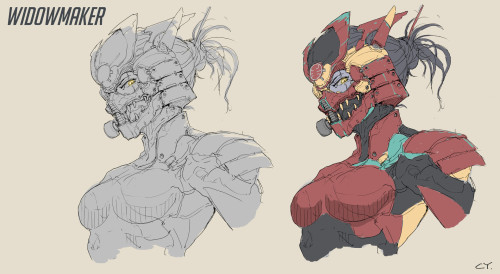

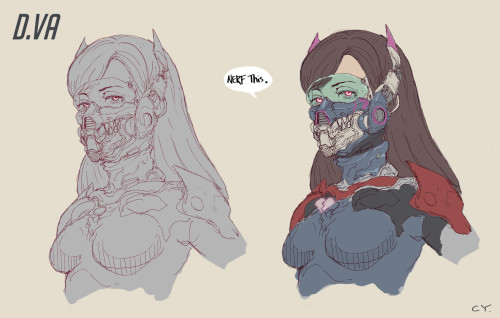
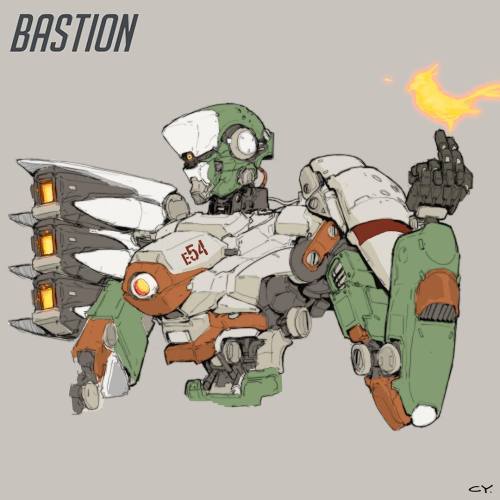
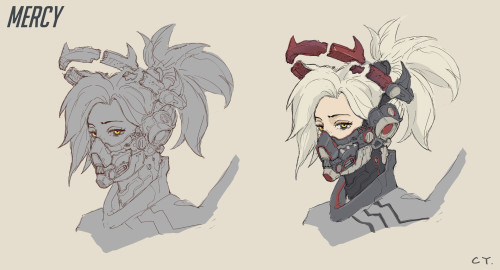

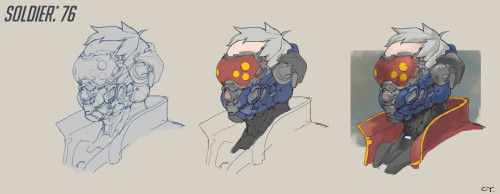
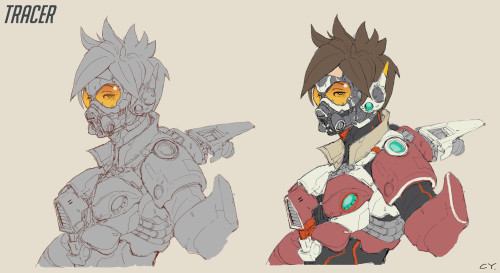
Ching Yeh
how did they learn to translate languages into other languages how did they know which words meant what HOW DID TH
-
 starboundsingularities liked this · 1 week ago
starboundsingularities liked this · 1 week ago -
 scroogert liked this · 1 week ago
scroogert liked this · 1 week ago -
 jade-harley-lesbian liked this · 1 week ago
jade-harley-lesbian liked this · 1 week ago -
 natlysblog reblogged this · 1 week ago
natlysblog reblogged this · 1 week ago -
 natlysblog liked this · 1 week ago
natlysblog liked this · 1 week ago -
 kerim-08 reblogged this · 3 weeks ago
kerim-08 reblogged this · 3 weeks ago -
 innovative-detritus reblogged this · 3 weeks ago
innovative-detritus reblogged this · 3 weeks ago -
 duskdragon39 liked this · 1 month ago
duskdragon39 liked this · 1 month ago -
 unexpected-tigers liked this · 1 month ago
unexpected-tigers liked this · 1 month ago -
 eidolonetchings liked this · 1 month ago
eidolonetchings liked this · 1 month ago -
 i-draw-death liked this · 1 month ago
i-draw-death liked this · 1 month ago -
 whatatumbler123 liked this · 1 month ago
whatatumbler123 liked this · 1 month ago -
 aro-ace-from-outer-space22 liked this · 1 month ago
aro-ace-from-outer-space22 liked this · 1 month ago -
 chithiry liked this · 1 month ago
chithiry liked this · 1 month ago -
 etriansquad-yssey liked this · 1 month ago
etriansquad-yssey liked this · 1 month ago -
 foop204 liked this · 1 month ago
foop204 liked this · 1 month ago -
 dreamsy990 reblogged this · 1 month ago
dreamsy990 reblogged this · 1 month ago -
 dreamsy990 liked this · 1 month ago
dreamsy990 liked this · 1 month ago -
 ladylokilove liked this · 1 month ago
ladylokilove liked this · 1 month ago -
 myworstdays reblogged this · 1 month ago
myworstdays reblogged this · 1 month ago -
 myworstdays liked this · 1 month ago
myworstdays liked this · 1 month ago -
 mira-algol reblogged this · 1 month ago
mira-algol reblogged this · 1 month ago -
 mira-algol liked this · 1 month ago
mira-algol liked this · 1 month ago -
 invisiblesketches liked this · 1 month ago
invisiblesketches liked this · 1 month ago -
 momolinia reblogged this · 1 month ago
momolinia reblogged this · 1 month ago -
 momolinia liked this · 1 month ago
momolinia liked this · 1 month ago -
 crunchity-munchity liked this · 1 month ago
crunchity-munchity liked this · 1 month ago -
 totallynotpuri reblogged this · 1 month ago
totallynotpuri reblogged this · 1 month ago -
 blitzgamev liked this · 1 month ago
blitzgamev liked this · 1 month ago -
 thought-u-said-dragon-queen reblogged this · 1 month ago
thought-u-said-dragon-queen reblogged this · 1 month ago -
 gamerfreddie reblogged this · 1 month ago
gamerfreddie reblogged this · 1 month ago -
 thought-u-said-dragon-queen reblogged this · 1 month ago
thought-u-said-dragon-queen reblogged this · 1 month ago -
 thought-u-said-dragon-queen liked this · 1 month ago
thought-u-said-dragon-queen liked this · 1 month ago -
 gamerfreddie reblogged this · 1 month ago
gamerfreddie reblogged this · 1 month ago -
 gamerfreddie liked this · 1 month ago
gamerfreddie liked this · 1 month ago -
 shootingcookielover reblogged this · 1 month ago
shootingcookielover reblogged this · 1 month ago -
 shootingcookielover liked this · 1 month ago
shootingcookielover liked this · 1 month ago -
 otters-and-rats reblogged this · 1 month ago
otters-and-rats reblogged this · 1 month ago -
 basilpasil liked this · 1 month ago
basilpasil liked this · 1 month ago -
 hashbrowne08 liked this · 1 month ago
hashbrowne08 liked this · 1 month ago -
 acedragontype liked this · 1 month ago
acedragontype liked this · 1 month ago -
 lizluvscupcakes reblogged this · 1 month ago
lizluvscupcakes reblogged this · 1 month ago -
 lizluvscupcakes liked this · 1 month ago
lizluvscupcakes liked this · 1 month ago -
 stillebesat reblogged this · 1 month ago
stillebesat reblogged this · 1 month ago -
 feigningroyalty liked this · 1 month ago
feigningroyalty liked this · 1 month ago -
 chibi-blue-scapula reblogged this · 1 month ago
chibi-blue-scapula reblogged this · 1 month ago -
 fawkesthefox liked this · 1 month ago
fawkesthefox liked this · 1 month ago -
 astronomical-bagel reblogged this · 1 month ago
astronomical-bagel reblogged this · 1 month ago